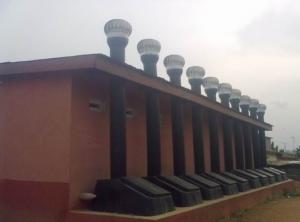How do we choose the most effective technologies in the delivery of water supply, sanitation and hygiene services?
Published on: 09/12/2013

There are many different types of pumps and ways of powering them, different latrines and hand washing facilities. But, across the developing world, broken down pumps, semi-functional piped schemes and abandoned latrines are all too common.
Many countries do not have policies or standards in place for assessment and introduction of new WASH technologies. This results in arbitrary (or politically motivated) adoption of technologies that are not fit for purpose, too expensive for users, not viable at scale and inadequately supported at the local level*.
Technologies that look like a good idea on paper and in marketing campaigns can be promoted for long periods of time before it becomes clear that they lack relevance or practical application on the ground. Another challenge is related to learning and feedback: lessons learned in pilots are often not widely shared. Feedback loops from communities to producers and implementers are weak. As a result user difficulties persist for long periods of time without being resolved.
The lack of guidance on technology selection and introduction has led to a set of negative consequences including:
This 6-minute video explains more.
To address these challenges two tools have been developed and tested as part of the EU-funded action research project called WASHTech. The Technology Applicability Framework (TAF) is a decision-support tool using a participatory process to assess if a specific technology is applicable in a certain context and can be scaled up. A complementary tool, the Technology Introduction Process (TIP) defines the roles and activities required for successful introduction and scaling up of technologies in a country. These tools will help select technologies fit for purpose and identify how to keep the services in operation and performing optimally to truly meet user needs.
The TAF manual, questionnaires, Technology Introduction Process guidelines and other key publications are provided as public domain and can be accessed through washtechnologies.net (see below). This resource base also provides a platform for sharing experiences on the application of the TAF after completion of the WASHTech project in December 2013.
*See WASHTech's Africa wide water, sanitation and hygiene technology review, which aimed to understand how technologies have been developed and introduced, whether they have gone to scale and to explore the reasons why they were successful or not: PARKER, A. (2012) Africa wide water, sanitation and hygiene technology review. WASHTech - Deliverable 2.1 , EU FP7 , WASHTech , Cranfield University, UK (Link below)
At IRC we have strong opinions and we value honest and frank discussion, so you won't be surprised to hear that not all the opinions on this site represent our official policy.